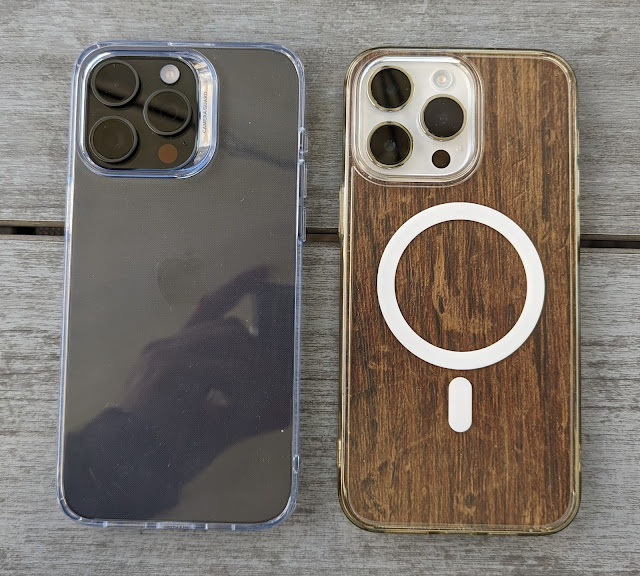Review - take 2: Drocon Bugs 3 brushless drone
Now, the eagle eyed will have spotted that I've already written about the (Blue) Bugs 3 on this blog. That was a month ago and I've not only lost one since then - and had it replaced - I've also built up a mountain of drone flying experience.
Which is why I wanted to re-review this drone, in the context of the mountain of other sub-£100 drones on the market. And it's also why I included the word 'brushless' in the title - as that bit's important.
But before I get started, a few links, as usual. In the USA, you can get the Bugs 3 here and there's an exclusive discount code you can apply, 3UE8L7BJ, getting you 20% off, down to $104. In the UK, you can get the Bugs 3 here and the code is ZE79A4G6, also for 20% off, bringing the drone down to £89, which is a steal for something of this quality.
This being my second Bugs 3 drone (ahem), I wanted to apply all my hard won experience to the testing and reviewing. Here are the things I've learned in the last month:
Partly this is due to the '2 way Wifi communication' advertised, partly it's the motor technology used.
Let me amplify that last phrase. In between the first Bugs 3 and this current one, I've been through the ultra-small micro drone and a mid-priced £50 affair. And as a result, I was somewhat taken aback by how noisy they were - the friction in the motors was audible and the ultimate reliability of the drone became suspect. Which is why 'brushless' is important on the Bugs 3 - I think it's the cheapest brushless drone?
Brushless means that there's no electrical or mechanical contact between the prop shafts and the motor guts - everything happens electromagnetically. Meaning greater efficiency, longer flights per battery charge (over 20 mins in my tests on the Bugs 3), and far, far, less noise. The Bugs 3 is whisper quiet by comparison to the cheaper competition and that's a big selling point.
Another feature I wanted to highlight was the battery system. Smaller drones (£50 or so) tend to have small packs with ultra-fiddly connectors. Been there, done that, been terrified that I was going to break the wires every time I reloaded! The Bugs 3 uses a large, long battery that slides beautifully into the underside of the drone and with a connector that slots snugly into the drone's body. It's the perfect way to do this and credit to Drocon here.
Now, it's fair to say that you don't get frills and extras here. There's no 'headless mode' or 'one key return', for example. But having played with this on my other drones, it's utterly unreliable because the moment the drone lands and perhaps twists a bit, the moment the wind rotates the drone in the air a bit, all of a sudden your 'one key return' is no longer calibrated for where it thinks it took off from and as a result you're in worse shape than before. Far better to have no headless mode, as here, and to learn to fly and control your drone properly.
There's also no camera included. Now, most drones from about £50 to £100 have cameras in their noses, but they tend to be low quality - the marketing material says '720p', but the actual quality of the footage is way, way below this. You don't get high quality drone video without spending a whole lot more than £100. So the Bugs 3 system of providing a sled and holder for a GoPro makes a lot of sense. Though this does mean quite a bit of set-up - not just the phone, but adding legs and prop guards, so add 10 mins either side of your flying session.
(I'm playing with mounting a Shoulderpod S1 phone holder onto the sled's tripod mount and use a smartphone, for example.)
In summary then, this is a professional quality, quiet (brushless motors), fast and responsive drone - and I love it to pieces. It's not really a beginner drone, be warned. (Again, for beginners, see here.) You need space and patience to fly this properly.
But when you master it, you'll be flying drones and pulling off distances and routines like the pros do. And that's not bad for £100!
PS. Watch this space for more Bugs 3 coverage - it's fair to say that I've got the Bugs 3 err... 'bug'!!
Which is why I wanted to re-review this drone, in the context of the mountain of other sub-£100 drones on the market. And it's also why I included the word 'brushless' in the title - as that bit's important.
But before I get started, a few links, as usual. In the USA, you can get the Bugs 3 here and there's an exclusive discount code you can apply, 3UE8L7BJ, getting you 20% off, down to $104. In the UK, you can get the Bugs 3 here and the code is ZE79A4G6, also for 20% off, bringing the drone down to £89, which is a steal for something of this quality.
 |
| Ready to fly, props spinning, etc.! |
This being my second Bugs 3 drone (ahem), I wanted to apply all my hard won experience to the testing and reviewing. Here are the things I've learned in the last month:
- Do NOT try flying drones indoors or in the garden (well, unless it's this one!)
- Find as big a space as you can, outdoors. Imagine how big a space you might need - and then double it. Really. If you're flying in a circular area of radius 'X' then you need double the radius, to allow margin of error, allow for breeze, etc.
- Talking of which, don't fly in any wind greater than 10mph. Really. That's how I lost my first Bugs 3. You take the craft aloft, you balance it happily on the wind and think "no Problem". And then you go 20 ft higher and all of a sudden the drone is out of control and you're panicking. And then it's too far away or into trees, and so on. Watch the first 30 seconds of this excellent tutorial video for an idea of my reaction when it all went horribly wrong!
- You probably don't need the prop guards on the Bugs 3 unless you're flying with children or animals - the guards are more to protect things the drone might hit than to protect the props themselves. Yes, if you crash then you might bend a prop - but spares are in the box, so don't worry too much. And without the prop guards, the drone fits back in its original cardboard box (just, along with all the spares and optional fittings), making it easy to transport. With the prop guards fitted, the Bugs 3 is just big enough that it becomes fiddly and awkward to take anywhere, e.g. in a car.
- You probably don't need the legs either. The Bugs 3's motors have stub legs beneath which are fine for general flying - the idea of the extended legs that can be screwed on is that they leave clearance for slinging an action camera beneath. Which you probably won't be doing that often. Plus, with the legs fitted, when the drone lands with any lateral speed, it tends to tip over, meaning you then do need the prop guards. And so on! As with the prop guards, keep them in the box and handy, but leave them off most of the time.
Partly this is due to the '2 way Wifi communication' advertised, partly it's the motor technology used.
Let me amplify that last phrase. In between the first Bugs 3 and this current one, I've been through the ultra-small micro drone and a mid-priced £50 affair. And as a result, I was somewhat taken aback by how noisy they were - the friction in the motors was audible and the ultimate reliability of the drone became suspect. Which is why 'brushless' is important on the Bugs 3 - I think it's the cheapest brushless drone?
Brushless means that there's no electrical or mechanical contact between the prop shafts and the motor guts - everything happens electromagnetically. Meaning greater efficiency, longer flights per battery charge (over 20 mins in my tests on the Bugs 3), and far, far, less noise. The Bugs 3 is whisper quiet by comparison to the cheaper competition and that's a big selling point.
Another feature I wanted to highlight was the battery system. Smaller drones (£50 or so) tend to have small packs with ultra-fiddly connectors. Been there, done that, been terrified that I was going to break the wires every time I reloaded! The Bugs 3 uses a large, long battery that slides beautifully into the underside of the drone and with a connector that slots snugly into the drone's body. It's the perfect way to do this and credit to Drocon here.
Now, it's fair to say that you don't get frills and extras here. There's no 'headless mode' or 'one key return', for example. But having played with this on my other drones, it's utterly unreliable because the moment the drone lands and perhaps twists a bit, the moment the wind rotates the drone in the air a bit, all of a sudden your 'one key return' is no longer calibrated for where it thinks it took off from and as a result you're in worse shape than before. Far better to have no headless mode, as here, and to learn to fly and control your drone properly.
There's also no camera included. Now, most drones from about £50 to £100 have cameras in their noses, but they tend to be low quality - the marketing material says '720p', but the actual quality of the footage is way, way below this. You don't get high quality drone video without spending a whole lot more than £100. So the Bugs 3 system of providing a sled and holder for a GoPro makes a lot of sense. Though this does mean quite a bit of set-up - not just the phone, but adding legs and prop guards, so add 10 mins either side of your flying session.
(I'm playing with mounting a Shoulderpod S1 phone holder onto the sled's tripod mount and use a smartphone, for example.)
In summary then, this is a professional quality, quiet (brushless motors), fast and responsive drone - and I love it to pieces. It's not really a beginner drone, be warned. (Again, for beginners, see here.) You need space and patience to fly this properly.
But when you master it, you'll be flying drones and pulling off distances and routines like the pros do. And that's not bad for £100!
PS. Watch this space for more Bugs 3 coverage - it's fair to say that I've got the Bugs 3 err... 'bug'!!






Comments